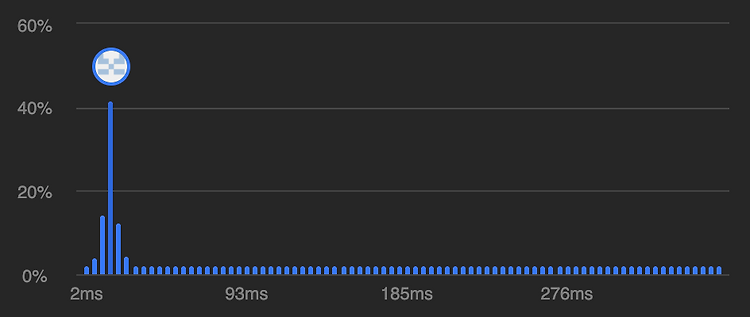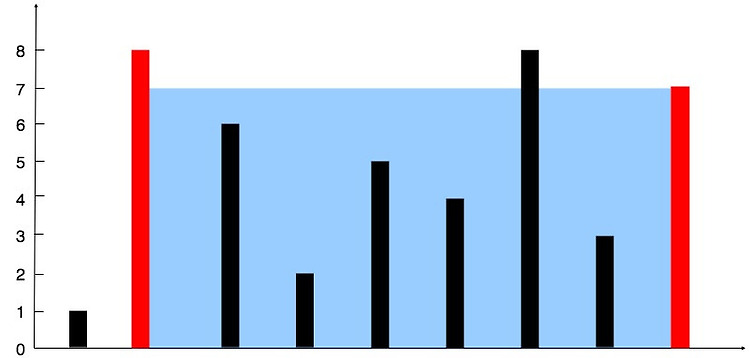Koko loves to eat bananas. There are n piles of bananas, the ith pile has piles[i] bananas. The guards have gone and will come back in h hours.Koko can decide her bananas-per-hour eating speed of k. Each hour, she chooses some pile of bananas and eats k bananas from that pile. If the pile has less than k bananas, she eats all of them instead and will not eat any more bananas during this hour.Kok..
오블완
You are given an m x n integer matrix matrix with the following two properties:Each row is sorted in non-decreasing order.The first integer of each row is greater than the last integer of the previous row.Given an integer target, return true if target is in matrix or false otherwise.You must write a solution in O(log(m * n)) time complexity.1. 각 행은 오름차순으로 정렬되어 있음2. 한 행의 첫 번째 값은 이전 행의 마지막 값보다 큼O(..
You are given the heads of two sorted linked lists list1 and list2.Merge the two lists into one sorted list. The list should be made by splicing together the nodes of the first two lists.Return the head of the merged linked list.두 개의 링크드리스트를 하나의 sorted linked list로 만들기! 풀이1: Recursion (재귀)# Definition for singly-linked list.# class ListNode:# def __init__(self, val=0, next=None):# se..

Given a string s, find the length of the longest substring without repeating characters.반복되는 문자 없이 가장 긴 substring의 길이를 찾는 문제!substring은 시작과 끝이 정의된 유동적인 범위이므로,상황에 따라 범위(윈도우)를 늘리거나 줄이는 슬라이딩 윈도우 풀이를 떠올릴 수 있다. 풀이 : Sliding Windowclass Solution: def lengthOfLongestSubstring(self, s: str) -> int: charSet = set() l = 0 res = 0 for r in range(len(s)): while s[..
Given head, the head of a linked list, determine if the linked list has a cycle in it.There is a cycle in a linked list if there is some node in the list that can be reached again by continuously following the next pointer. Internally, pos is used to denote the index of the node that tail's next pointer is connected to. Note that pos is not passed as a parameter.Return true if there is a cycle i..

You are given an integer array height of length n. There are n vertical lines drawn such that the two endpoints of the ith line are (i, 0) and (i, height[i]).Find two lines that together with the x-axis form a container, such that the container contains the most water.Return the maximum amound of water a container can store.Notice that you may not slant the container.그림을 보면 쉽게 이해가 가능하다. slant (기..
Given the head of a singly linked list, reverse the list, and return the reversed list.singly linked list 가 주어지면, reversed list를 반환하는 문제다. ListNode 클래스파이썬에서 연결리스트를 구현하기 위해서는 직접 클래스를 정의해야 한다.LeetCode 문제에서 제공되는 연결 리스트 정의는 다음과 같다.# Definition for singly-linked list.# class ListNode:# def __init__(self, val=0, next=None):# self.val = val # 현재 노드가 저장하는 값# self.next = next # 다..
You are given an array prices where prices[i] is the price of a given stock on the ith day.You want to maximize your profit by choosing a single day to buy one stock and choosing a different day in the future to sell that stock.Return the maximum profit you can achieve from this transaction. If you cannot achieve any profit, return 0.주식 가격 배열이 주어졌을 때, 얻을 수 있는 maximum profit을 리턴하는 문제. 풀이1: 브루트포스?..
Given an array of integers nums which is sorted in ascending order, and an integer target, write a function to search target in nums. If target exists, then return its index. Otherwise, return -1.You must write an algorithm with O(log n) runtime complexity.간단한 바이너리서치(이진탐색) 문제!이진탐색은 정렬된 배열에서만 사용할 수 있는 탐색 알고리즘이다. 이진탐색은 매번 탐색 범위를 절반으로 줄이므로 시간복잡도가 O(n)이다.또한 문제에서 명시적으로 O(log n) 시간 복잡도로 해결하라고 요구하고 있는데..
Given an array of integers temperatures represents the daily temperatures, return an array answer such that answer[i] is the number of days you have to wait after the ith day to get a warmer temperature. If there is no future day for which this is possible, keep answer[i] == 0 instead.주어진 온도 배열에서, 각 날 이후 더 따뜻한 날이 오기까지 며칠을 기다려야 하는지 계산하는 문제이다. 풀이1: 브루트 포스class Solution: def dailyTemperatures(s..